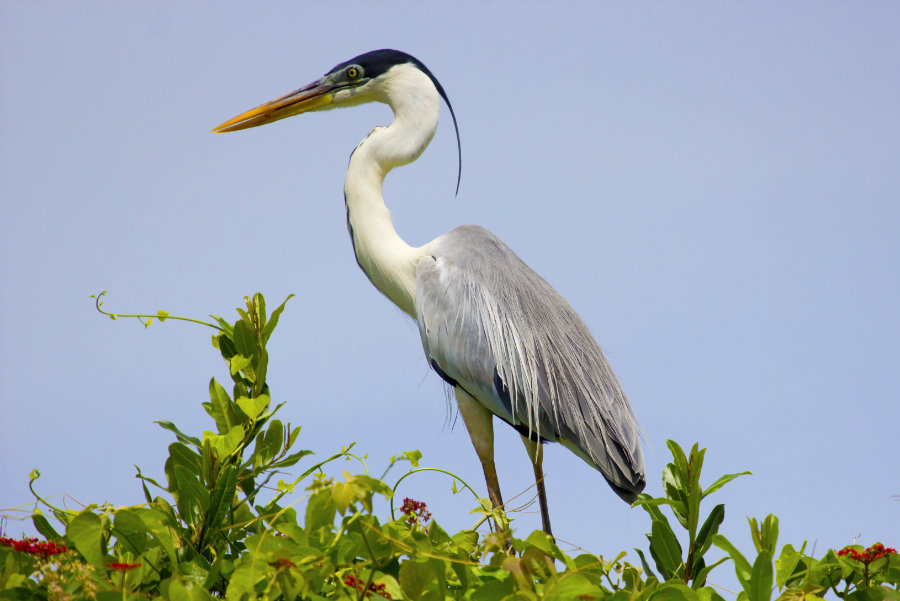Cocoi Heron
Cocoi Heron
Known locally as Maguari or Garça-moura, the Cocoi Heron is the largest heron species in Brazil - reaching up to 1.30m tall. It's easy to recognise thanks to its grey-black on white colouration, and distinctive black cap. When seen in flight it has large grey wings.
Cocoi Heron
The species' range covers all of South America except for the Andes. Their range stretches northwards up into Panama where they overlap with their closely related North American equivalent, the Great Blue Heron (Ardea hernias). Together, the Cocoi Heron, Great Blue Heron and the European Grey Heron (Ardea cinerea) form a heron "superspecies". These three species all share similar size, skeletal morphology, and similar markings. However, the Cocoi Heron is visually distinguishable from the other two species by its white neck and solid black crown.
Adults stand up to 100-130 cm in height and weigh up to 3.2 kg. Aside from the black cap and white neck, the Cocoi Heron has a grey back and wings, and white thighs. The underparts are mixture of black and white - with black streaks down the throat centreline. Cocoi Heron have yellow eyes with grey-blue patches of facial skin. Outside of the breeding season, the beak is a dull orange. Males and females are similar in appearance, whereas immature Cocoi Herons are greyer, and have a duller but still distinctive dark cap.
Behaviour and Habitat
Scientific Name
Ardea cocoi

Local Name
Maguari or
Garça-moura

Description
Very large heron standing up to 1.30m tall. Grey body and wings but with a long white neck and head. The head has a distinctive black cap. The underside are mixture of black and white. Immature specimens are greyer and have a duller cap. Cocoi herons are a frequent sight through the marshes and waterways of the Pantanal, with the species' range extending across almost the entire South American continent.
Reproduction
Cocoi herons can nest alone but often gather together in larger colonies, which may be mixed with other heron species. Nests are built in trees or in reeds close to the water. The nests are large and deep, being built from twigs and reeds, then lined with grass. Up to four eggs may be laid. These are light blue in colour, with paler speckles. Eggs are incubated for around 24 to 26 days.
Conservation and Threats
Quick Facts
- Also known as a the White-Necked Heron.
- The name Cocoi comes from the indigenous Tupi language - and means "bird with a hopping walk".
- Cocoi Herons have a habit of partially opening their wings, then standing to face the sun. This probably serves to help regulate the internal temperature of their body.
- Cocoi Herons are shy and rarely let people get close. A "safe" distance for this bird is at least 60 to 80 m.
- As with all herons, Cocoi Herons fly with its neck retracted in an S-shape. This differs from other species such as cranes, ibises and spoonbills which fly with their necks extended.
- Besides covering all of South America (except the high Andes) Cocoi Heron are occasional visitors to Trinidad, Tobago, and the Falkland Islands.
Cocoi heron taking to the air with a freshly caught meal. Credit: Qwuito/Wikimedia
Banner image: Portrait of a Cocoa Heron (Shutterstock/Pablo Rodriguez Merkel)


